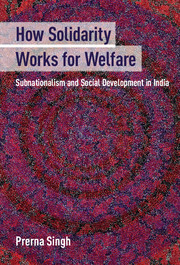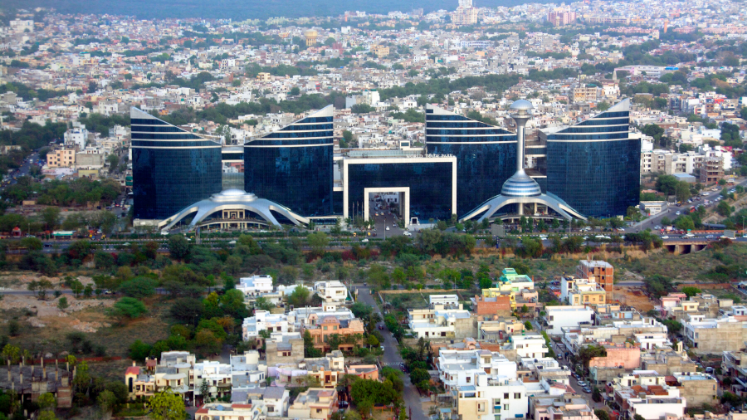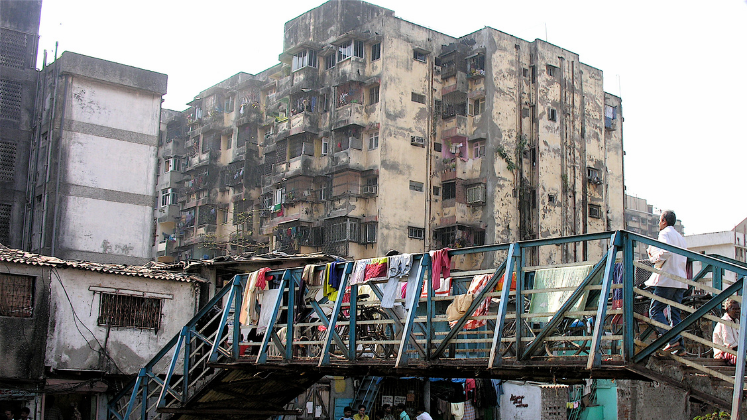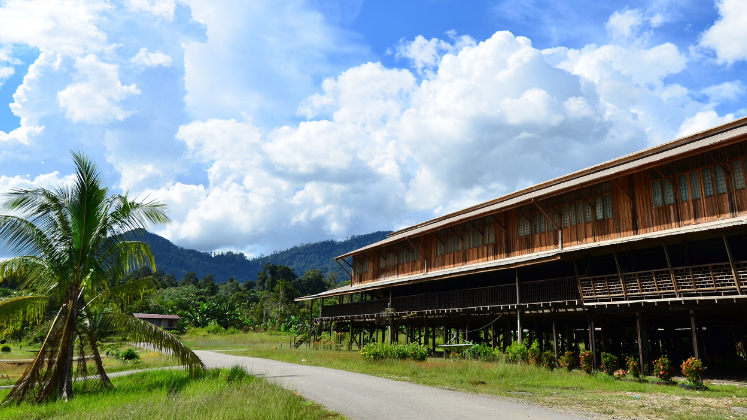Why are some Indian states characterised by better social service provision and welfare outcomes than others? In How Solidarity Works for Welfare: Subnationalism and Social Development in India – winner of the Woodrow Wilson Foundation Award 2015 and co-winner of the Barrington Moore Book Award 2016 – Prerna Singh counters negative perceptions of identity politics to show how subnationalism within India has often worked to promote, rather than inhibit, social development and the provision of welfare. Janak N. Padhiar welcomes this as a refreshing new perspective that offers valuable and innovative policy suggestions.
How Solidarity Works for Welfare: Subnationalism and Social Development in India. Prerna Singh. Cambridge University Press. 2015.
Find this book (affiliate link): ![]()
 One of the most striking features of the political economy of India is the sheer diversity in wealth distribution as well as disparities in literacy and fertility levels across states. Such intra-country variations in the socioeconomic makeup of India have sparked scholarly interest in locating the roots of these divergences in social development. Why do some states in India experience more positive welfare regimes and social outcomes development than others? What are the causes of Indian subnational variations in wellbeing across time and space?
One of the most striking features of the political economy of India is the sheer diversity in wealth distribution as well as disparities in literacy and fertility levels across states. Such intra-country variations in the socioeconomic makeup of India have sparked scholarly interest in locating the roots of these divergences in social development. Why do some states in India experience more positive welfare regimes and social outcomes development than others? What are the causes of Indian subnational variations in wellbeing across time and space?
Prerna Singh’s How Solidarity Works for Welfare: Subnationalism and Social Development in India offers a nuanced look into the ‘big questions’ for understanding the conditions that promote social welfare against a landscape of dramatic discrepancies across educational and health outcomes within a large, multi-party democracy: India. These questions are not only timely, but also clarify some of the reasons why there is an inconsistency in the distribution of public goods in the social sectors of various Indian states.
Singh uses her expertise, most notably in statistical methods and comparative historical analysis, to advance an innovative approach to qualitative and quantitative methods from the late nineteenth century to the present, wherein the legacy of colonial rule and the neoliberalisation of India has significantly influenced contemporary social welfare provisions and outcomes in various Indian states and provinces. The methodology is presented in Chapter One, before Singh examines the millions of lives plagued by illiteracy and ill health by elucidating detailed case studies of five Indian states – Tamil Nadu, Rajasthan, Kerala, Uttar Pradesh and a shadow study of Bihar– in addition to statistical analysis of all Indian states from the 1970s to the 2000s.
 Image Credit: ‘The Blue City of Jodhpur‘ by Lokankara licensed under CC BY SA 3.0
Image Credit: ‘The Blue City of Jodhpur‘ by Lokankara licensed under CC BY SA 3.0
Singh conceptualises social development in terms of education and health outcomes insofar as these are the two key attributes of a population that can predict other dimensions of social outcomes, such as access to sanitary facilities and the overall status of women. The focus on health and education, argues Singh, could enable more general claims about social development, which can therefore provide greater understanding of the ways in which ‘democratic states can better fulfil their duties to their citizens [with] greater legitimacy and stability’ (14). In doing so, the book challenges scholarship on social welfare and the politics of identity in India by suggesting that the sentiments of subnationalism – that is, communal cohesion and a stronger sense of community and solidarity – deeply influence a shared subnational identity.
Past research on India predominantly by economists and political scientists has shown that social divisions adversely affect the provision of public goods due to greater ethnic and linguistic divides, leading to lower levels of economic outcomes (e.g. Alesina, Alberto et al 2003; Banerjee, Abhijit and Lakshmi Iyer 2005). However, Singh’s novel point of departure situates subnationalism as the ‘subnational solidarity’ that emerges from a sense of shared identity, leading to improved social outcomes rather than the absence of deep religious and ethnic divisions. Singh begins Chapter Two by theorising subnationalism as a concept that ‘identifies with or aspires to be a self-governing homeland located within the boundaries of a sovereign country’ (27). Subnationalism in the book emerges as an ideological construction that incorporates a sense of a common culture beyond the fragmentations of ethnicity, language or geography. By drawing on social identity theory framed within a liberal nationalist scholarship, Singh argues that collective support for social welfare policies is a product of a strong sense of belonging.
The power of attachment to a subnational political community and identity is explored through a comparative and historical lens by juxtaposing positive cases of welfare regimes, such as in Tamil Nadu and Kerala in Chapters Three and Four, against the negative outcomes of Uttar Pradesh, Rajasthan and Bihar in Chapter Five. Singh approaches the ‘Kerala Model’ of development as a successful case of using subnationalism as a bridge that binds social divisions in order to achieve high social development indicators (112). Singh posits through statistical and historical evidence that it was neither the dominant left party, princely states nor the contributions of Christian missionaries that boosted Kerala’s social indicators. Instead, a cohesive sense of subnational solidarity and identity among the political elite communities meant an egalitarian distribution of state resources, such as the merit goods of health and education, irrespective of the party in power. Similarly, in Tamil Nadu, the emergence of an ‘elite subnationalism’ from the 1970s onwards was a positive outcome when two of the state’s leading political parties vied to promote and create a shared Tamil identity (112-13). This resulted in effective social schemes in state policies, such as improvement in nutrition and school rates due to a free midday meal programme, textbooks and uniforms for schoolchildren.
In contrast, Chapter Five takes the narratives of the Northern states of Uttar Pradesh and Rajasthan to showcase instances in which, despite initial progress with better social indicators, both states gradually failed to sustain stronger versions of subnationalism. However, the main point of contrast for Singh remains the difference between fragmented versions of subnationalism in Uttar Pradesh versus a cohesive one in Rajasthan. The former was unsuccessful in developing strong community resonance with subnationalism despite a caste-based identity in the 1990s, whilst the latter cultivated higher social development outcomes by stimulating support for a shared Rajasthani identity based on common language, customs and cultural events. This was particularly true for Rajasthan in the 1980s, when a generational shift away from loyalties towards the former princely kingdoms allowed the mass involvement of groups sharing similar ideas and mores. Thus, the success and failure of the promotion of values and symbols committed to cohesive subnationalism depend on the timings of such actions by a group of networks that share a strong subnational identity.
Chapter Six compliments the in-depth case studies and analyses through time series and cross-sectional data to empirically demonstrate the strength of subnationalism across Indian states through testing the hypothesis that stronger subnationalism in a state could lead to positive levels of social development and greater expenditures in the social sector. Of course, there are limitations in the availability of data for providing a full scale of analysis, which Singh acknowledges. Despite the conclusion of a peculiar set of historical circumstances that has left some states with a widening gap of welfare provisions and social outcomes (i.e. between Kerala and Uttar Pradesh), in the final chapter the reader is left with some sense of hope when individuals from different groups continue to change the socio-political consciousness of Indian states to foster support for social welfare regimes.
Singh offers a refreshingly new perspective on the causes that lead to better social development in India through the tools of subnationalism, even in fractured societies. This research greatly contributes not only to the intellectual history on the evolution of India’s economic institutions, but also development studies, behavioural economics, political science, geography and social policy. How Solidarity Works for Welfare enables a rich interdisciplinary discourse through these intersections by adding to existing theories that underscore ethnic homogeneity and economic development as some of the preconditions for social development. Singh expands upon previous studies of Indian political economy and political sociology to include an important variable of collective group identity, and also offers valuable state social policy suggestions that can be employed through rethinking innovative regional policies vis-à-vis the spirit of subnationalism.
Note: This review gives the views of the author, and not the position of the LSE Review of Books blog, or of the London School of Economics and Political Science. The LSE RB blog may receive a small commission if you choose to make a purchase through the above Amazon affiliate link. This is entirely independent of the coverage of the book on LSE Review of Book








Thanks for your nice information